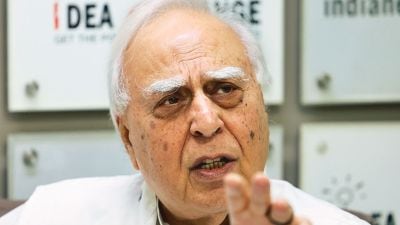Hotshot consultants plagiarise report in bid to get power project cleared
NEW DELHI, AUGUST 26: Can the environmental impact of two dam projects at different locations and on two different rivers be exactly the s...

NEW DELHI, AUGUST 26: Can the environmental impact of two dam projects at different locations and on two different rivers be exactly the same? Can the villages to be submerged, the areas’ flora and fauna, even the soil and water analysis data be exactly identical?
Yes, if Ernst & Young, which calls itself “one of the world’s leading professional services organizations” is to be believed.
Although it’s only a 20 MW project, experts are calling it a “serious case of fraud in environmental decision-making in Indian history.” And the green brigade in Karnataka is salivating, for never before has it got such ammunition to campaign against a power project. Especially when the state government gave an “in-principle clearance” to the project based on this report. And the state Pollution Control Board even held a public hearing, mandatory for all such projects, on August 21.
The controversy hinges on an environment impact assessment report prepared by Ernst & Young for its client, the Murdeshwar Power Corporation Ltd, for the Rs 180-crore, 130-mu (million units) Dandeli Mini-Hydel Project (DMH) in Karnataka.
Sixty of the 65 pages of this report have been reproduced ad verbatim from an impact report of the proposed Tattihalla Augmentation Scheme (TAS), a state government power project. That report was prepared by the Institute for Catchment Studies and Environmental Management (ICSEM), Bangalore.
The Indian Express has with it both the reports and they are identical, word by word, para by para. The only change Ernst & Young have made is to introduce the name DMH wherever the name TAS appears.
The DMH project was not even conceived when studies for the Tattihalla project were conducted. In fact, the Ernst & Young report did not even change the timing of the field observations: field observations for both the projects were done from June to September, 1999!
When contacted, Sudipto Das, Director of Environmental Services, Ernst & Young, claims that one mistake they could have made is “not attributing the source of the data.” But he insists that “ethically and professionally, no wrong was done.” Why?
One: Although the two projects are on different rivers and at different locations — over 100 km apart — the “data may not be radically at variance with each other” since this is a “macro-level” study, the “micro-level” research will be done next month. And anyways, Das claims, the two projects are only “10 km apart as the crow flies.”
Two: Das claims that ICSEM, which wrote the TAS report, and Ernst & Young were “joint signatories” to the report.
Nonsense, says ICSEM’s Scientist In Charge Anand Rao, one of the authors of the TAS report. “It’s copied cent per cent,” says Rao adding that there’s no way both projects can have “identical environmental impact even at the macro level.” Especially, when there are striking differences in the characteristics. “The forests around the Tattihalla project are degraded and the fauna is rare. But the forests surrounding the Dandeli project are evergreen,” says Rao. “Even the places mentioned in the Ernst & Young report are nowhere near the Dandeli project. They didn’t even correct our spelling mistakes!”
Managing director of the Karnataka Power Corporation Limited (KPCL), the state-owned enterprise which runs all mega power projects and which is executing TAS, said he would look into it immediately and take necessary action.
Bangalore-based Environment Support Group is now using this “fraud” in its campaign against the project. The group’s Leo Saldanha told The Indian Express that the report was “managed” to get a clearance from the Government. And that the project involves the “submergence of about 87 hectares of moist deciduous and evergreen forests in the Uttara Kannada district in the Western Ghats.”


- 01
- 02
- 03
- 04
- 05





























